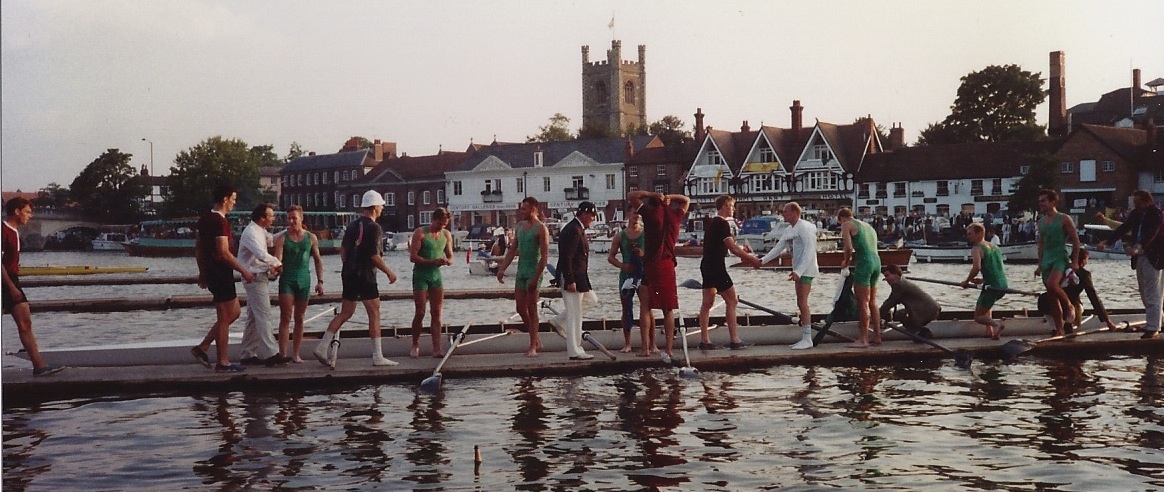Updated 1 June 2018: Frank Keating of the Guardian has written about an important anniversary for boxing on 17 April – the date in 1860 of the first ever world title fight between James Carmel Heenan of the US and Englishman Tom Sayers.
Most reports describe the fight as having taken place in a “Hampshire field” near Farnborough. As with the 1833 fight between Simon Byrne and “Deaf” Burk, information about venues for prize fights were only passed on by word of mouth in order to avoid attracting the attention of the authorities: prize fights were illegal even thought many establishment figures were enthusiastic spectators.
Rushmoor Borough Council, the modern local authority for Farnborough, suggests the fight was fought near the Ship Inn, which is about three-quarters of a mile from the Farnborough mainline station. For Hennan v Sayers, special trains had been organised to transport thousands of spectators from London to see the fight.
In a comment to my original post, Stuart Orr, drew my attention to further clues as to the location of the fight he found in the Times‘ report of the fight.
He observes that “The Ship Inn does not seem to match the most detailed description. There was a Road from the station to the Ship Inn.”
He notes that the Times report reads, “In an instant after, [getting off at the station] all were out in the fields, following the men who with the ropes and stakes led the way across what turned out to be a most difficult piece of country. There seemed to be a constant succession of double hedges and ditches …until a rather narrow stream, or very muddy ditch (the Blackwater] which divides Surrey from Hampshire, bought all to a full stop. … the ring was formed on the Hampshire side…” He also cites other descriptions that say it was marshy and near the south-western railway line.
[The Hampshire Chronicle of Saturday 21 April 1860, a newspaper covering the Farnborough, re-printed the Times‘ report verbatim, and didn’t feel any need to draw on local knowledge to make changes to the description of the location.]
From a 21st century perspective, its not unreasonable to assume that the reference to a station in Farnborough would mean the station on the South Western mainline. However, in 1860, Farnborough North, on the Reading, Guildford and Reigtate Railway (RG&RR) was also known simply as “Farnborough”.
Bell’s Life and the Times both describe the throng that gathered for London Bridge for the special trains. Bell’s Life reported that the fighters themselves traveled on one of them. Both papers report how the trains, one of which had 33 carriages and departed at 3.30 am, left London on the Brighton and Dover lines. [The London police, “armed with cutlasses” had been turned out in force along the line to ensure the fight didn’t take place within their jurisdiction.] The papers also report that the trains entered the “Guildford line” at Reigate Junction. This would suggest that the special trains disgorged their passengers at Farnborough (North) rather than today’s Farnborough (Main).
So if the fight took place between the station and the western, Hampshire, bank of the Blackwater, and somewhere close to the south-western lines, it would probably have taken place somewhere in the shaded area in the map below.
As there are still watercourses in this area, even after changes to local drainage that would have accompanied the construction of what looks like a relatively modern bypass (the A331), the terrain would also have tallied with the description of the hedges and ditches which confronted the spectators.




